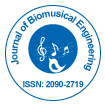Review Article
Musical Improvisation and Brain Correlates: An EEG Based Neurocognitive Study Using Hindustani Music
Shankha Sanyal1,2, Archi Banerjee1,2*, Shirsendu Mukherjee1, Tarit Guhathakurata1, Ranjan Sengupta1 and Dipak Ghosh11Sir C.V. Raman Centre for Physics and Music, India
2Department of Physics Jadavpur University, Kolkata, India
- *Corresponding Author:
- Archi Banerjee
Sir C.V. Raman Centre for Physics and Music
Department of Physics, Jadavpur University
Kolkata, India
Tel: +919038569341
E-mail: archibanerjee7@gmail.com
Received date: October 25, 2016; Accepted date: November 22, 2016; Published date: December 05, 2016
Citation: Sanyal S, Banerjee A, Mukherjee S, Guhathakurata T, Sengupta R, et al. (2016) Musical Improvisation and Brain Correlates: An EEG Based Neurocognitive Study Using Hindustani Music. J Biomusic Eng 4:119. doi:10.4172/2090-2719.1000119
Copyright: © 2016 Sanyal S, et al. This is an open-access article distributed under the terms of the Creative Commons Attribution License, which permits unrestricted use, distribution, and reproduction in any medium, provided the original author and source are credited.
Abstract
The concept of creativity and perception of a raga is revisited in this work from the brain electrical response of a professional Hindustani musician. EEG was done to record the response when a musician created the imagery of raga Jay Jayanti as well as when he listened to the same raga sung by him. We have quantified the correlation values obtained from different lobes of the brain during these two experimental conditions using a robust non-linear technique called multifractal detrended cross-correlation analysis (MFDXA). With this method, we have seen that both during imagination and perception the degree of cross-correlation is very high in the occipital lobe, purportedly due to the visualization of the raga by the musicians. In other electrodes also, inter/intra-lobe cross correlations have been found to be significantly during different conditions. With this study, we look forward to develop a paradigm with which we can quantify the definition of creativity. The results are discussed in detail.

 Spanish
Spanish  Chinese
Chinese  Russian
Russian  German
German  French
French  Japanese
Japanese  Portuguese
Portuguese  Hindi
Hindi